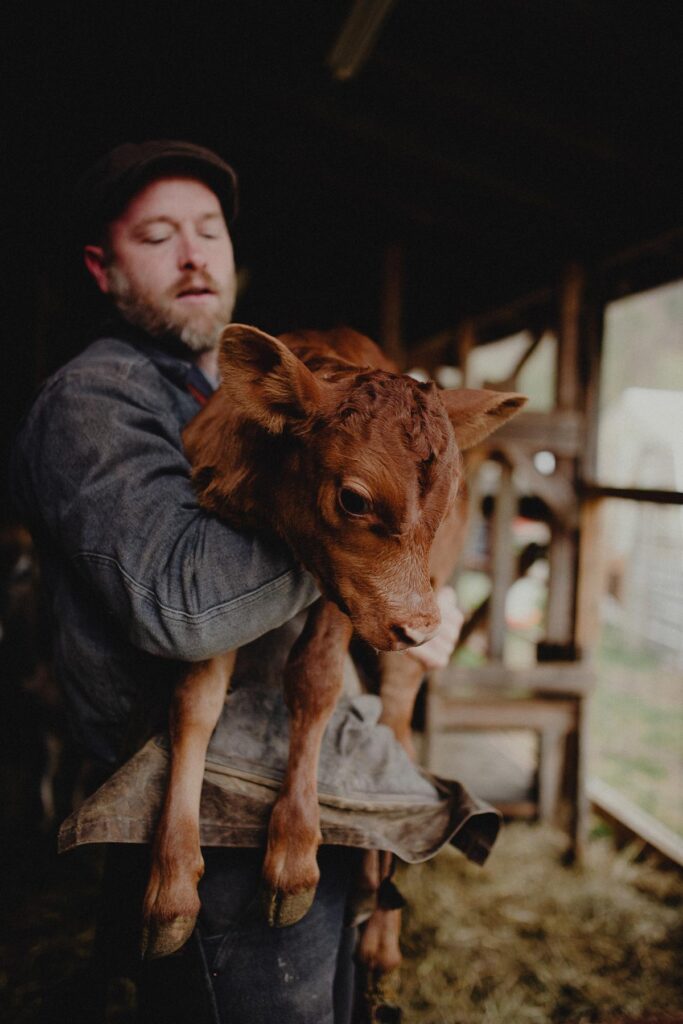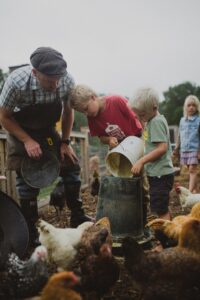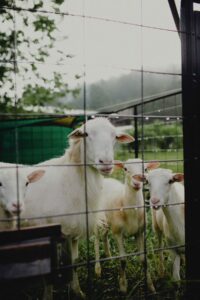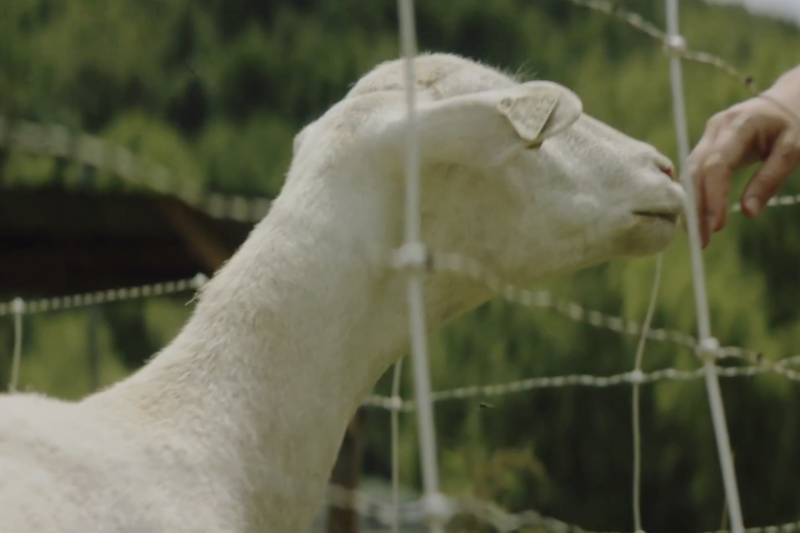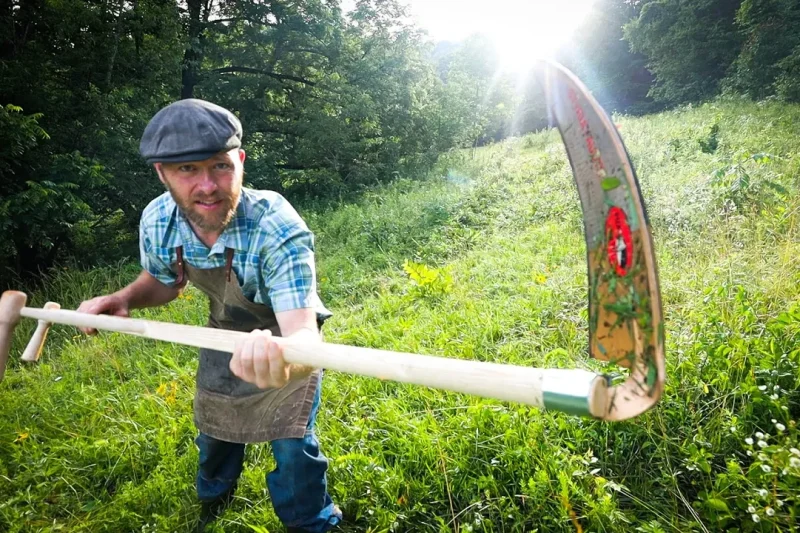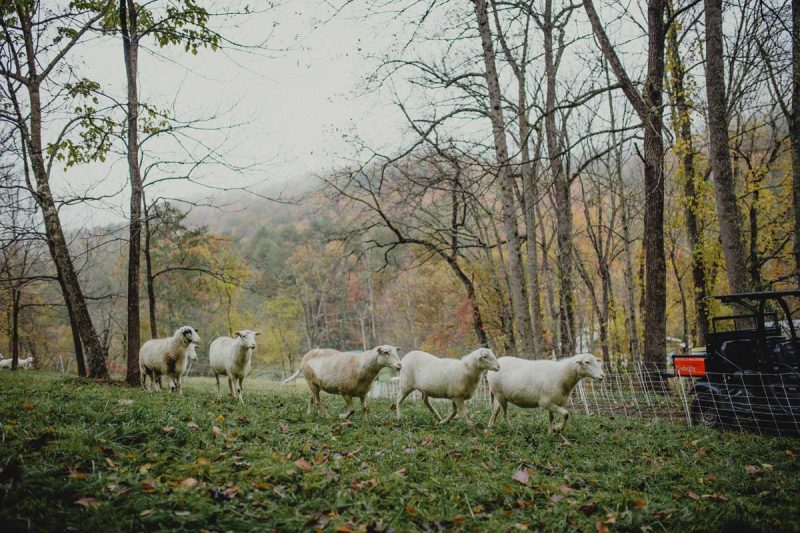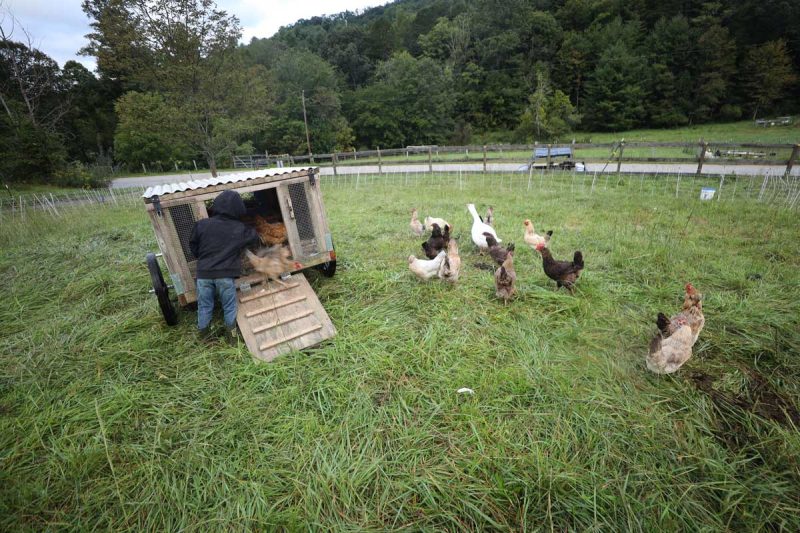Use this guide to learn how to manage your milk cow and newborn calf during the first critical days of calving season.
Happy Cows = Quality Milk
Birthing a calf triggers milk production in the momma cow (or Dam), allowing us to train our cow to milk.
To have a thriving farm, we ensure that we care for our newborn calves and mommas. For our cows and calves to have stress-free lives, we keep them in a herd and birth them in the fields.
We also feed our cows on quality pastures with mineral supplements, and we even milk the cows by hand in the field.
Caring for our newborn calves and mommas allows for happy, healthy cows and gives us quality milk and meat, which is one of the many benefits of the permaculture way of life.
We try our best to create a farm with strong genetics, which allows us not to intervene as much in managing our cows. Cows with strong genetics produce cows in good body condition that birth independently without assistance, mommas that bond with their calves, and baby calves that don’t need assistance with standing and nursing.
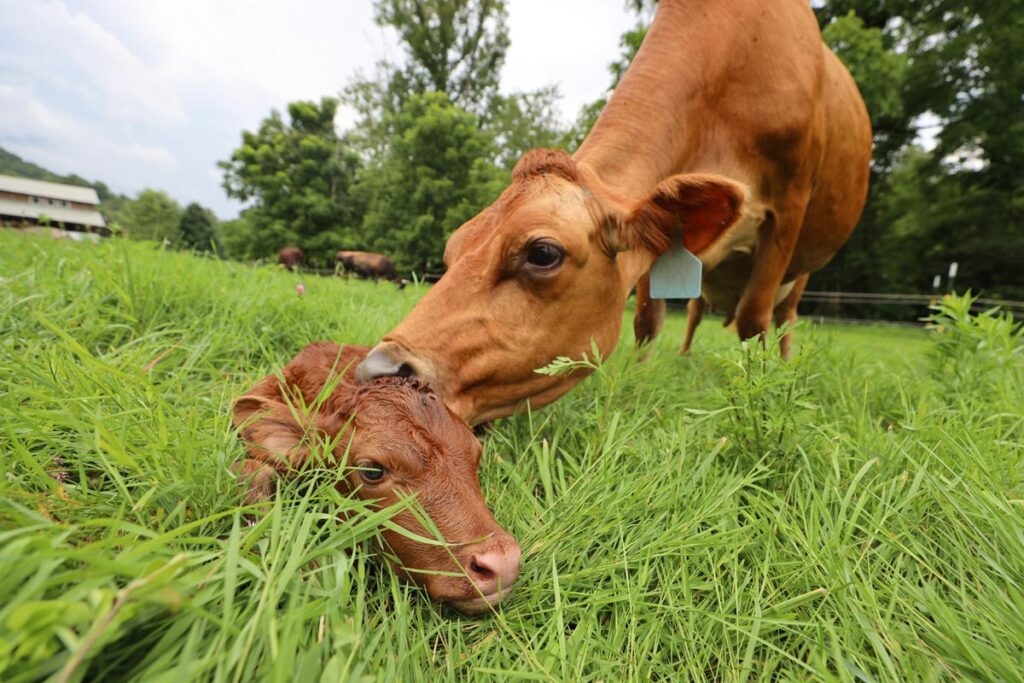
First Hours of Birth
We recommend being present during the calf’s birth in case of complications. The best case scenario (which is most common) is that your calf will be born naturally on its own, but sometimes complications happen which require assistance during the birth.
Momma Cow
Once your heifer has given birth, she must be attentive to her calf. She is now called a Dam (a mother of a calf). She should be licking the calf, which stimulates the calf to breathe, move, stand, and nurse.
An important thing to look for in a new momma cow is that she is not rejecting her calf. She should be cleaning and drying her calf, not leaving it alone. Your cow should be bonding with her calf.
When the calf is born, the momma cow still has to birth the afterbirth (placenta). This should come within 8 to 12 hours after the calf is born. When she births the placenta, her instinct is to eat it.
Cows eat their afterbirth for a couple of reasons. One, to get rid of the newborn smell, so predators don’t come in and attack the calf, and second, the placenta is full of nutrients and hormones to nourish the cow.
Giving your cow clean, cool water and extra feed such as hay and alfalfa are beneficial to give her additional energy after giving birth.
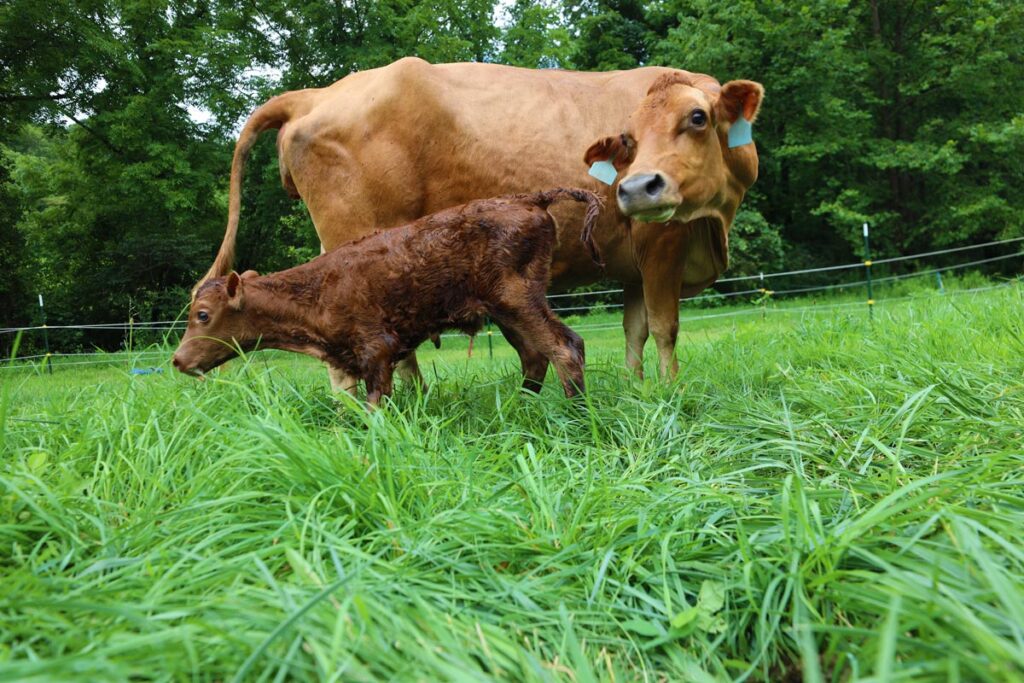
Calf
Once the calf is born, it should breathe, stand, nurse, and bond with its mother. The calf needs to be on its feet within an hour after birth. You may need to assist if it is not standing in this time frame. The sooner it is up and standing, the sooner it can nurse.
A calf has little immunity to diseases when born, so it’s critical for them to stand up and nurse within the first 2 hours after birth.
Our calf was born on a warm, dry day in late February, but if you have calves born in bad weather, moving them into a sheltered area could help your calf stay dry and prevent hypothermia.
A mother’s first milk (colostrum) is thick and contains antibodies and nutrients. A calf needs about 5% of its body weight in colostrum within the first hours of life, which generally translates to one gallon.

First 24 Hours After Birth
The calf must receive the benefits of the high-quality colostrum in the first 24 hours after birth. Without this milk, the calf’s digestive system will slowly stop having the ability to absorb the antibodies in the colostrum.
We do not like to intervene in feeding calves. However, if your calf is not nursing, you may have to intervene and use an esophageal tube feeder to deliver the colostrum, and bottle feed your calf with milk from the momma cow (or with a milk replacer).
Finding out the sex of your calf is essential as well. A female calf is called a heifer, and a male calf is a bull. Knowing this will allow you to know when to milk your cow. If your calf is a heifer, it is best to milk halfway out about 24 hours after birth. If your calf is a bull, it is best to fully milk your cow once a day after 24 hours post calving.
It is vital to watch your Dam in the first 24 hours for signs of milk fever. Insufficient calcium in the blood causes milk fever. Signs that your cow has milk fever are hypersensitivity, weakness, loss of appetite, excitability, and weight shifting.
To treat milk fever, you will have to administer calcium through IVs. Always consult a vet before diagnosing milk fever and administering calcium.
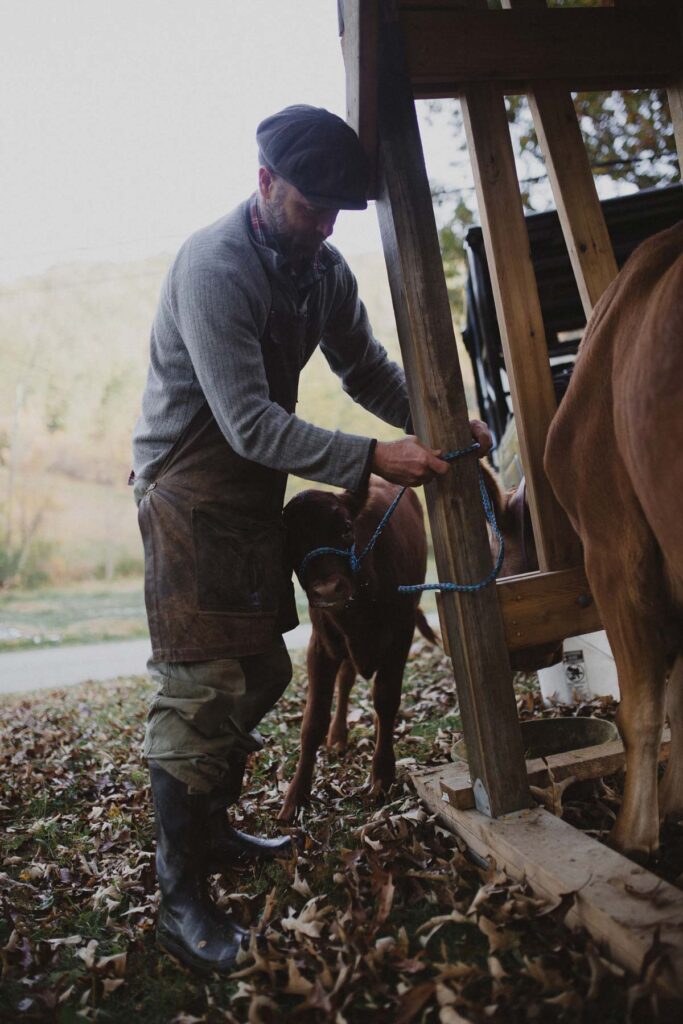
First 10 Days
In the first ten days, your calf will continue nursing (eating), drinking, and sleeping next to its momma. We let momma do all the work. We take care of momma a little more by milking our cow first thing every morning during this time.
Milking is essential because the process triggers the cow’s body to provide equal opportunity for the right amount of milk for her calf and us. It is a natural way of supply and demand that allows our family to have organic milk every day.
Milking also helps prevent mastitis in the cow; learn more about treating mastitis in cows here.
Your cow will produce fresh colostrum a few days after she has delivered her calf, and then she will begin to produce milk. We also drink colostrum during the first few days as it is a super-rich source of organic nutrients.
Sometimes a cow will not let down her milk for milking but allows her calf to have the milk. If she does have this problem, it is a good idea to wipe down her utter and nipples with warm water (not hot water that can burn) to help trigger her to let down her milk.
